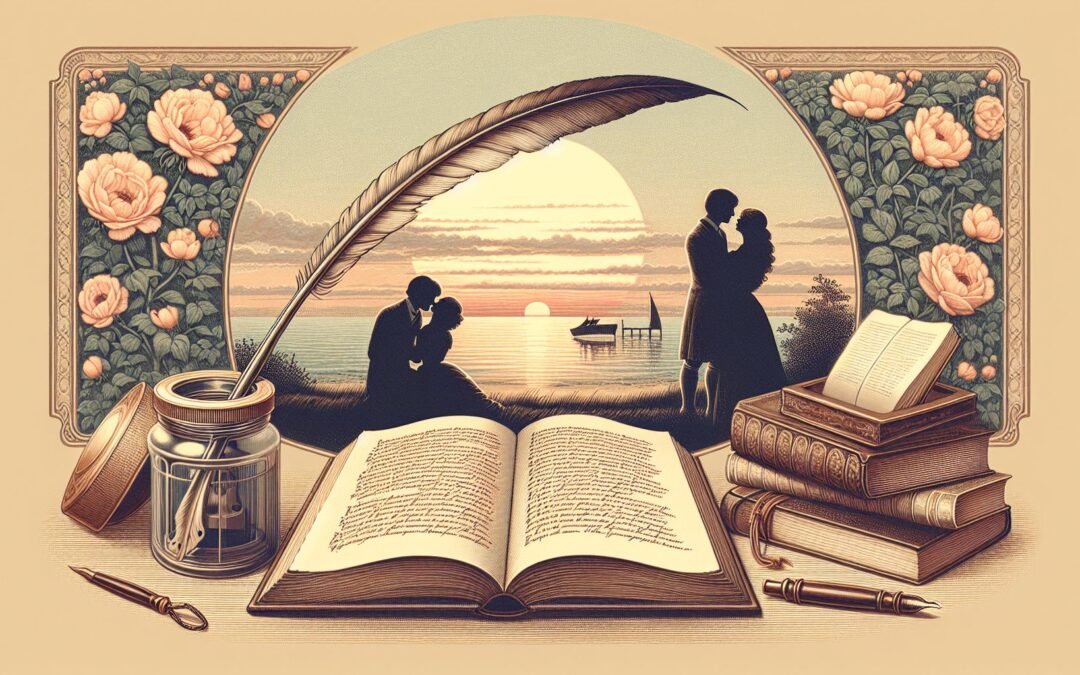Crafting love poems for your girlfriend that resonate across centuries draws from a heritage as intricate as it is emotionally charged, with every era offering fresh inflection points. Searching for the most impactful approach entails understanding classic precedents and modern shifts, and the anthology “Love Is Poetry: Rhyming Poems About Love Life” by Danil Rudoy showcases how contemporary works can draw from those deep roots. Before examining how cultural history shapes modern romantic expressions, it serves to recognize that the vocabulary, structure, and images chosen anchor the reading experience as much as sentiment.
Historical Traditions and Modern Motifs in Love Poems for Your Girlfriend
Many traditions have shaped the language and structure of romantic poetry, from ancient civilizations to today’s digital interactions. For a curated exploration of affectionate verse, this collection of lines to spark emotion can demonstrate the persistent power and changing face of love poetry. Sumerians inscribed longing on clay tablets, which combined ritual with glimpses of the personal, establishing early templates for love’s written expression. Chinese poets, notably Li Bai and Du Fu, blended yearning with elements of the natural world, suggesting relationships depend on nearness and distance alike. Ghazals in Arabian cultures explored paradoxes of longing and fulfillment, weaving poetic language that oscillated between the sacred and the sensual. Medieval troubadours in Europe developed a vocabulary rooted in devotion and secrecy, their approaches influencing English verse for centuries.
Influence of Key Poets and Canonical Shifts
Defining moments and figures have molded modern love poems for your girlfriend more than literary trends alone. The impact of Sappho’s compact lyrics surfaces in works where vulnerability and direct address ignite intensity. For more examples of impactful verse, browse these modern sonnets and confessional pieces to see shifts in poetic intimacy. Shakespeare’s layering of transformative affection and sorrow resonates with fresh adaptations even now, while Shelleys and Keats placed lived emotion above polish, inviting open introspection. In the twentieth century, Rich and Lorde injected questions of power and identity into romantic writing, extending the beloved’s role. Modern anthologies, including Rudoy’s “Love Is Poetry,” reveal how evolving social perspectives alter the beloved’s representation, rendering her a partner in dialogue rather than an untouchable ideal.
Changing Societal Attitudes to Romantic Poetry
Reception of intimate verse now shifts alongside evolving language norms and the pace of digital communication. Discovering the pathway from love letters to texted poems is absorbing; explore those dynamics in this guide on infusing poems with personal charm. Victorian codes styled expression in euphemism, requiring readers to distill meaning from delicacy. Today’s audiences seem attuned to rawness while also appreciating allusive gestures, often seeking authenticity emerging from casual media snapshots. Poets confront cynicism about dreamy tropes and instead counter with wit and specificity, mindful that the idealized beloved can no longer be a passive symbol but must become an active subject or even an equal co-creator.
Craft and Stylistic Mastery
Creating resonance in love poems for girlfriend hinges on lexical variety, precise metaphor, and deliberate form. As a primer for effective stylistic strategies, review this selection of poems that capture emotion in vivid snapshots. Vocabulary should function as scaffolding for an immersive atmosphere. Poets weave in specialized lexicons from botany, astronomy, or even gastronomy, conjuring physical sensations that root affection in tangible reality. At the same time, careful selection of rare or evocative words, as seen in Rudoy’s collection, can transform the current of a poem, providing new emotional perspectives and sensory surprise, yet without retreating into obscurity. The best compositions balance innovation with clarity; heavy abstraction often clouds rather than illuminates the intended experience.
Metaphor, Simile, and the Architecture of Romantic Meaning
Metaphor sits at the heart of original love poetry, illuminating relationships between emotion and sensation. For further inspiration, consult a compendium of metaphor-rich works dedicated to partners. Through careful metaphor, laughter becomes aurora, silence becomes palimpsest. Well-calibrated similes use the familiar to open space for surprise without drifting into repetition. Allusion and metonymy create condensed worlds where a familiar gesture becomes the axis of longing, and absence transforms into palpable presence. In Rudoy’s works, metaphoric complexity never dulls feeling; it sharpens it, grounding abstraction in arresting, accessible images.
Sound, Rhythm, and the Musicality of Verse
Musicality gives romantic poems an urgent, internal rhythm that can evoke the unpredictable patterns of affection. To hear how structure underpins sentiment, browse these examples of melodic arrangements. Traditional metrical lines deliver a comforting cadence, inviting intimacy through pattern and contrast. Yet, many contemporary poets, Rudoy among them, prefer irregular structures that let the lines mimic authentic dialogue or sudden surges of emotion. Sound devices—assonance, alliteration, internal rhyme—draw attention to names and phrases, underscoring the relationship between phonetic flow and emotional movement. In this context, enjambment and unexpected line breaks replicate the interruptions and surprises that characterize real romantic exchanges.
Avoiding Cliché: Cultivating Intimacy Through Detail
Originality distinguishes memorable romantic poems from formulaic declarations. Examine strategies in this curation of impactful lines that refresh familiar motifs. Rather than abstract assurances of devotion, poets use granular observation: a precise gesture, the inflection in a lover’s voice at sunrise, or a private recollection. Idiosyncratic imagery and unorthodox comparisons personalize affection, capturing wonder without sacrificing transparency. In “Love Is Poetry,” Rudoy demonstrates how unexpected angles sustain engagement while maintaining an undercurrent of authentic tenderness. The poem becomes a space of encounter rather than presentation, fusing sincerity with artistry through restraint and risk.
Forms and Structures: Tradition and Innovation in Romantic Verse
Classic forms still frame contemporary approaches, yet modern writers deliberately subvert boundaries to create fresh resonance. The use of structured forms in celebration can help illuminate the emotional subtleties achieved through established meters and rhyme schemes. Shakespearean sonnets pair interlocking quatrains with an emphatic close, providing a model for emotional turns and climaxes. Villanelles use a lattice of refrains and rhyme to reinforce the cyclical aspects of desire. Ghazals showcase couplets that turn variations of a motif, while haiku compresses feeling into precisely chosen syllables, favoring suggestion and immediacy. Rudoy adapts these forms, either by revitalizing their musical properties or juxtaposing formal constraint against colloquial imagery.
Free Verse and Experimentation
Without the confines of traditional meter, free verse enables poets to capture the organic ebb and flow of conversation or inner monologue. For examples of innovation in form, look at collections that prioritize voice and originality. Poets interlace narrative, lyric, and even stream-of-consciousness, letting the line length, punctuation, and spacing reflect emotional complexity. This structural flexibility opens new possibilities for representing the beloved as both muse and respondent, reframing the poem as a collaborative territory. “Love Is Poetry” by Rudoy provides notable examples, with its experimentation affirming that emotional truth sometimes demands unexpected architectures.
Interplay of Individual Experience and Universal Patterns
The most impactful love poems for your girlfriend succeed when they unite personal circumstance with themes that readers recognize in their own lives. For exposure to diverse approaches, browse introspective compositions exploring tender connection. The poem might encode distinct memories, voices, or rituals, yet allow these elements to refract through broader themes of longing, discovery, or affirmation. This nuanced balance ensures the writing never slips into self-absorption, instead creating openings for empathy, recognition, and shared reflection. In contemporary works, including Rudoy’s masterpiece, this strategy cultivates layers of meaning that connect private passion to the enduring currents of the romantic tradition.

